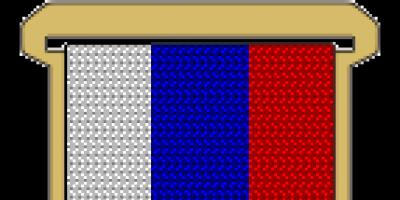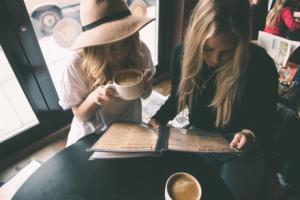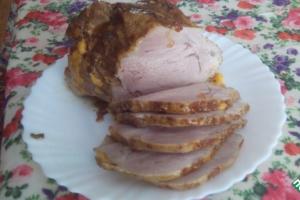Children's games with sand contribute to the development of visual and tactile perception, fine motor skills, imagination and artistic and aesthetic taste. For such activities, you can make a sand painting table with lighting yourself.
What will you need to make a sand painting table?
The materials and tools needed to make a glowing table with your own hands are inexpensive.
Necessary materials
- Boards.
- A sheet of plywood 10 mm thick or furniture board.
- Glazing bead.
- Plexiglas.
- Ribbon with light bulbs.
- Fork
- Switch.
- Nails.
- Self-tapping screws.
- Water based varnish.
Required Tools
- Thicknessing machine for processing boards.
- Hacksaw for cutting boards and plywood.
- A hex key for driving screws or a hammer when using nails.
How to make a sand painting table?
A table for practicing with sand is made in stages. Since the presence of light is the main advantage of such a table, great attention should be paid to installing light bulbs. Other stages of manufacturing the structure are also important.
Stage 1: choosing acrylic, glass
The format of acrylic or glass should be selected according to the parameters of the inside of the table.
For the safety of children, it is better to use acrylic. To ensure that the light diffuses evenly, it is better to use white or beige material with a thickness of 5 mm or more. You can purchase thicker transparent acrylic, but in this case the interior of the table will be visible and the light will be too bright. The disadvantage of acrylic coating is its high cost.

A cheaper option is glass. It should be thick enough, preferably white. Suitable glass can be found in advertising workshops. If the material is transparent, you can stick a white one on top protective film. It will help create the desired light intensity and protect children if the glass breaks.
Stage 2: measure seven times - cut once
If a sheet of glass or acrylic irregular shape, it is recommended to cut off the excess with a mounting knife using a ruler. You should not rush when performing this operation, as the knife may jump off the cut line.
You can buy acrylic in any size, and then cut the boards and plywood with a hacksaw to suit the size of that covering. The boards must first be treated planer to make their surface smooth.

The plywood base of the table must be cut, taking into account the format of the acrylic and the thickness of the side boards. To perform the operation more accurately, you can use a paper blank. The plywood should cover the sides of the table, but not extend beyond them.
Boards can also be trimmed if necessary. Their height and width are selected so that there are no protruding or uneven edges of the table. The length of the boards should not be less than the parameters of the bottom sheet of plywood so that sand does not spill out. It is also recommended to make them the same height.
Stage 3: trimming corners and fitting acrylic
All surfaces must be smooth to prevent children from getting hurt. Sharp corners should also not be for security reasons.
After determining the parameters of all components You can start assembling the table. Boards can be connected with screws or nails. The result should be a structure resembling a box.

To install acrylic or glass, glazing beads must be attached to the top of the resulting box. Their size is selected based on the internal parameters of the table. It is also better to nail the bars with small nails.
After this, you need to check whether the acrylic coating fits in the frame prepared for it. If not, it can be trimmed. The coating should not be installed before installing the backlight.
Stage 4: electrical
To make a backlit table, the best option is self-adhesive LED strip, which can be of different colors, sizes and configurations. It is charged from a 12 volt power supply. You can independently attach a switch and plug to the tape for mains power.

The brightest light will come from white bulbs. Due to this, the contours of the image created with sand will be clearly visible. The darker the light, the worse the drawing will be.
Stage 5: lighting installation
It is necessary to drill a hole in the bottom of the table through which the wire is passed. Several knots are tied at the end of the plug that remains inside the box so that it does not fall through.
Before pinning LED strip inside the box, you need to lay it out inside to make sure that its length matches the dimensions of the sides of the box. Otherwise, it can be cut off. It is better to glue the tape from the end that is closer to the connection cable, so as not to make a new hole in the table body. For reliability, you can additionally secure the LEDs with double-sided tape on the bends and corners.

To check, the tape should be connected to a power source before installing the glass.
After this, the acrylic must be glued to the glazing beads. You can secure it with self-tapping screws, carefully calculating the size of the holes for them, since if they are not larger than the fasteners, the acrylic coating may crack.
If you can’t buy LEDs, you can use New Year's garland with small light bulbs, having previously trimmed it to fit the size of the table. You can secure it with small pieces of adhesive tape.
Such lighting will be more interesting for children, as the color of the light bulbs will change. It is better that this change occurs slowly, which will promote relaxation and stimulate the creative activity of children. Flashing bright colors will bore them.
Finally
A table made in this way will not take up much space. It will be useful not only for sand drawing, but also for copying images or drawings. It is important to keep the acrylic coating clean and follow safety precautions when working with it to make painting a joy.
From the presented master class, you will learn how to make a luminous table yourself, which furniture stores costs a lot of money, and thanks to this information you can do it for mere pennies. Today, it is becoming increasingly fashionable to make furniture with your own hands, as well as various interior delights, that is, people are looking for uniqueness in the things that surround them, some need it for self-realization and gaining self-confidence, while others just love doing this business .
And so, to make a luminous table, you will need old boards eaten by bark beetles. It is the old and rotten ones, eaten by worms and other bugs, that are needed in order to fill these cavities with a special luminous solution. Now let's take a closer look at everything and figure out what the author needed.
Materials
- board (old and eaten by bark beetle)
- epoxy resin
- metal legs
- metal plate 2 pcs
- wood glue
- nuts
- bolts
Tools
- jigsaw
- drill
- brush
- clamp
- ruler
- screwdriver
- container for mixing components
The process of creating a glowing table.
And since it was already said above, the author took old and rotten boards eaten by pests, it is clear that he did not buy them on the construction market 😉 The master went through the boards thoroughly with a planer and a large sandpaper. Then the author selected and sawed the boards he needed to size so that they were the same size.  The resulting boards should then be combined into a single tabletop, this action The master does this as follows: he coats the side parts of the boards with wood glue, and then tightens them with clamps and leaves them to dry.
The resulting boards should then be combined into a single tabletop, this action The master does this as follows: he coats the side parts of the boards with wood glue, and then tightens them with clamps and leaves them to dry.  Then, after the tabletop has dried and is ready, it should be blown with compressed air, namely all the cracks and wormholes, so that no dust remains in them and possible pests.
Then, after the tabletop has dried and is ready, it should be blown with compressed air, namely all the cracks and wormholes, so that no dust remains in them and possible pests. Afterwards, you should go over the surface with sandpaper; you need to do everything extremely carefully, because the board is very delicate. And so the surface of the tabletop is prepared and it’s time to prepare the luminous solution and fill the cavities of the table with it.
Afterwards, you should go over the surface with sandpaper; you need to do everything extremely carefully, because the board is very delicate. And so the surface of the tabletop is prepared and it’s time to prepare the luminous solution and fill the cavities of the table with it.
Preparation of the solution: for this you will need epoxy resin, hardener and phosphor powder, it will glow. Everyone chooses the proportions of the mixture themselves; you can check the glow in the following way: give a bright flash to the mixture and turn off the light to see how the solution glows. Next, the author fills the cavities, having previously placed wax paper under the tabletop, because the passages can be through.  After completing this operation, the master left the tabletop to dry. And then I processed the edge of the table manual router.
After completing this operation, the master left the tabletop to dry. And then I processed the edge of the table manual router. Due to the fact that the board is rather weak in terms of density and integrity, the author screws these nuts onto the back of the tabletop.
Due to the fact that the board is rather weak in terms of density and integrity, the author screws these nuts onto the back of the tabletop.  Misses glue metal plate and glues it.
Misses glue metal plate and glues it.  And in this way he screws the legs to the table. Well, the table itself is ready.
And in this way he screws the legs to the table. Well, the table itself is ready.  Such a table will fit into any even the most sophisticated and expensive interior, and the cost of this table itself is absolutely cheap, but in stores such tables cost about $1000, can you imagine 😉 So take it this material note, and in order not to lose touch with us and our website, join our group
Such a table will fit into any even the most sophisticated and expensive interior, and the cost of this table itself is absolutely cheap, but in stores such tables cost about $1000, can you imagine 😉 So take it this material note, and in order not to lose touch with us and our website, join our group
Anyone who wants to make the interior of the apartment original or add a “zest” to the equipment summer cottage, this option is suitable - a table with “backlight”. The product is created using epoxy resin and two types of durable paints. All work - from sanding to cladding - is quite accessible to a beginner in carpentry.
All work - from sanding to cladding - is quite accessible to a beginner in carpentry.


Furniture with a luminescent effect looks unusual and especially interesting.
Making a glowing table with your own hands does not require any special material or labor costs. Handle wooden table top With the help of a special resin, anyone who knows how to hold an instrument in their hands can do it.

When decorating a table, you can come up with your own design based on the quality and texture of the material.

Furniture with a luminescent effect looks unusual and especially interesting.
You are unlikely to see such products on the open market; they are usually made to order and are quite expensive, as handmade. Thick boards or ready-made ones are suitable for production. wooden table with an interesting texture. Applying epoxy resin takes half an hour. After some time, if all processing steps are followed correctly, you will receive a table with a mesmerizing glowing effect.

Making your own furniture for your garden or home is a great way to save your budget.
Deciding on design and construction
When processing, the stage of furniture construction does not matter. To create a luminous effect, use only the tabletop, although you can make furniture entirely with a luminescent surface. Designers agree that it is better to process individual panels - this way the product looks more interesting.

Glowing table can be made stationary or folding.

Making a glowing table with your own hands does not require any special material or labor costs.
Depending on the texture, you can apply some of the resin to the cracks, or cover the entire tabletop, including the edges, with a luminescent compound (with a light blue or other tint). It is necessary to choose a “variegated” option or a relatively evenly glowing one based on your taste and needs.

Designers agree that it is better to process individual panels - this way the product looks more interesting.
Necessary materials
To make a glowing table you will need the following materials:
- boards - 2 pieces (40-50 cm wide, 1-1.2 m long);
- epoxy resin;
- sticky paper;
- luminescent and transparent polyurethane paint;
- sandpaper.

It is necessary to choose a “variegated” option or a relatively evenly glowing one based on your taste and needs.

Anyone who knows how to hold a tool in their hands can treat a wooden tabletop using a special resin.
The tree is selected with noticeable cracks of irregular shape. A board with visible areas where branches have been cut and an uneven texture is welcome. Good for cypress or oak. If the tree is not dry enough, expose it to the sun for a while.

The tree is selected with noticeable cracks of irregular shape.

You need to take enough epoxy resin to fill the cracks several times.

Making your own furniture for your garden or home is a great way to save your budget.
Required Tools
To finish the furniture you will need:
- Sander;
- jigsaw

The table is sanded as before covering the surface epoxy resin, and after
The table is sanded both before and after the surface is coated with epoxy resin.

Before treating the surface, the tabletop should be assembled from two prepared boards.

After some time, if all processing steps are followed correctly, you will receive a table with a mesmerizing glowing effect.
Manufacturing process: step-by-step instructions
- Before treating the surface, the tabletop should be assembled from two prepared boards. Having connected them, sand the base.
- Pour the prepared mixture of epoxy resin and fluorescent paint onto the table. The composition should fill all the cracks, so repeat the procedure 8-10 times. After this, cover the surface with adhesive paper and leave to dry until the next day.
- After removing the paper, sand the finished surface. After cleaning, coat the base with polyurethane paint.
- Walk around again grinder on a still wet surface. Remove any remaining resin. If necessary, the edges can be cleaned and the corners rounded with a jigsaw.

A table with a luminous surface can be decorated to your liking
The final stage is decoration
A table with a luminous surface can be decorated to your liking. Fat wooden plank looks great as in in simple form(even with visible “defects”), and in combination with carved legs. This can be done using a jigsaw. You can varnish them or use leftover epoxy resin, like the countertop, to give them uniform style product.

You can varnish or use leftover epoxy resin, just like the countertop, to give a unified style to the product.

The luminous table can be made stationary or folding.

After processing, you need to sand the furniture using a machine.
At night, the product will glow in heterogeneous patterns, which creates a “magical”, festive effect, which in itself is a decor.

In the dark, the product will glow in heterogeneous patterns, which creates a “magical” effect.

Depending on the texture, you can apply some of the resin to the cracks, or cover it with a luminescent compound.
If contrast is desired, the supports are coated with paint that differs in color from the main palette.

Creating a festive effect, which in itself is a decor.

Good for cypress or oak.
VIDEO: DIY glowing table
50 photo ideas: DIY glowing table
Table made of oak blocks. Moreover, the table is not simple, but glows in the dark. The procedure for making this is undoubtedly interesting product Let's take a closer look.
The mold is made from fiberboard (a round base and a side glued along the periphery); you can use any other material that is available.
A bunch of oak pieces of approximately the same thickness are being sawed. Their sizes can be arbitrary, but their shape is approximately square. 
The trimmings are laid out in the mold, first in a circle, and then evenly fill the internal space. 
After completely laying out the entire surface of the future table, all the cracks are filled with epoxy resin, but not to the full depth; about 5 mm remains unfilled. After the resin has dried, the surface is sanded one level. For grinding, a grinder with a flap grinding wheel was used. 
Then the epoxy is mixed with a phosphor (BLO-7D phosphor is better to take about 50 microns, you need 300 grams. Ordered on the Internet) (Alternatively, you can order the phosphor on AliExpress) and the cracks are filled from above. After drying, we sand again, varnish and you’re done - you can remove the tabletop from the mold. 
It turns out like this (in the light)

We all know very well that shawls, termites, bark beetles and other “lovers” of wooden food are one of the main destroyers of roofs, furniture, wooden floors, etc.
If you find the right approach to the damaged material and process it a little, you can get an excellent original glowing table, which, for example, on some sites costs about $780-800. So let's get started.
1. To make such a table, try to choose boards that are most damaged by bark beetles. But, most importantly, do not forget to treat all the material with chemical or heat treatment. Otherwise, the bugs will not stop and will continue to do their gnawing business. Fig.1

2. After this, plan the board on all sides. And then cut the pieces. Which will be equal to the length of the table. Rice. 2

3. If you want to get a wide tabletop, then here you will have to join several boards together. This procedure is performed using wood glue and tenons. The glue must be applied along the entire length of the board. Once you have done this, tighten the boards with clamps and let them dry. Rice. 3

4. All passages along which the woodworms moved must be treated by removing dust and rot (for this it is recommended to simply blow it out with compressed air). Rice. 4

5. Next, you need to sand the surface of the countertop itself to such a state that it is smooth and even.
6. The next stage is preparing the countertop for pouring with epoxy resin. Be sure to place wax paper under the bottom side of the tabletop itself, and make a special plexiglass side on the sides. This procedure is mandatory, since bugs can make through passages.
7. Next you need to prepare the resin for pouring. To do this, it is tedious to measure out a certain amount of resin and hardener. You need to add phosphor powder to the epoxy resin (it is what provides the glow in the dark). As for the amount of phosphor itself, there are no certain proportions. You have to guess, so to speak. After you have already mixed the resin and phosphor, you need to use a flash on the resin, and then in a dark room look at the density of the glow itself. If you like everything and it fits, add hardener. Rice. 5

8. Now fill all the holes with epoxy resin. Due to its viscosity, it will not spread on the table, so it is recommended to level it with a ruler immediately after pouring.
9. Even after the resin has hardened, in any case, irregularities will remain on the surface. To do this, simply sand all defects thoroughly. Initially, use coarse sandpaper, and then move on to fine grain (somewhere from 80 to 400).
10. It is best to process the edge of the table with a hand router. Rice. 6

11. Well, the most crucial moment is finishing your table. Open the tabletop with varnish, and when it dries, sand it with fine sandpaper (1200 grit). This procedure needs to be carried out a couple of times so that the table shines well.
12. Due to the fact that the wood used was damaged and rotten, so that the legs were securely fastened, we use sheet material. To do this you need with reverse side tabletops, drill special holes for the nuts, then apply glue to the plates and glue them to the tabletop. Rice. 7








